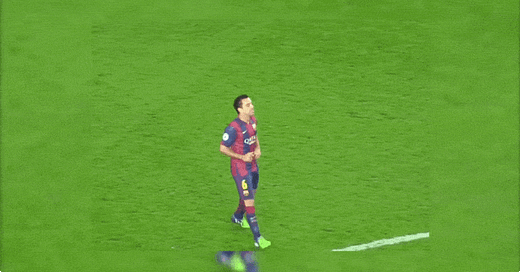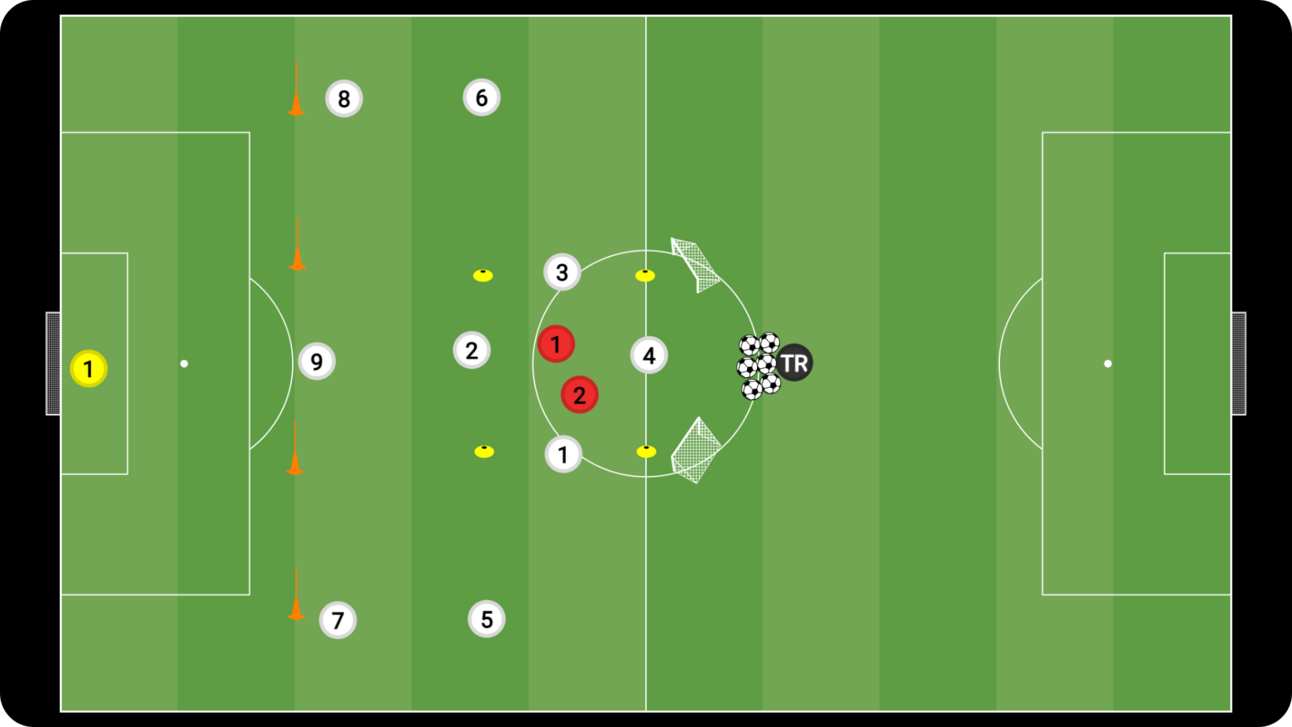The Importance of Scanning the Field
The Difference Between an Outstanding Player and a Good Player
Hello and warm welcome to the latest edition of our newsletter! In this issue, the following topics take center stage:
⚽The Importance of Scanning the Field
👉2 New Exercises!
✒️Quote of the Week
⚽The Importance of Scanning the Field
Today, we want to discuss a topic that is often overlooked but can make a significant difference in the level of play: the continuous scanning of the field. Professional players, in particular, use this technique regularly to optimize their gameplay and improve their decision-making on the pitch. But why is scanning the field so important, and what can we learn from it?
Why is Scanning the Field so Important?
Scanning the field means that a player regularly checks their surroundings to get a sense of the positions of teammates, opponents, and the ball. This behavior allows players to make quicker and more precise decisions. A player who does not scan the field often plays "blind" and, as a result, has a lower chance of making effective passes or positioning themselves optimally.
Difference Between Professionals and Amateurs
Studies have shown that professional players scan the field significantly more often than amateur players. An average professional player scans the field approximately 0.5 seconds before making a pass and again shortly after, whereas a less experienced player does this less frequently. Frequent scanning allows professionals to create a mental picture of the game and react more quickly to changes.
Practical Examples from Professional Football
An excellent example is Xavi Hernandez, former midfielder of FC Barcelona. Xavi was known for constantly scanning the field. Even before receiving the ball, he already knew where he would play the next pass. This exceptional awareness helped him play precise passes under pressure and exploit spaces that other players might not have seen.
Another example is Andrea Pirlo, who was also known for his ability to "read" the field. Pirlo's ability to gather and process information by scanning the field made him one of the best playmakers of his time.
Scanning Alone is Not Enough
It's important to emphasize that merely scanning the field is not sufficient. A player must also gather and process the right information from what they see. This means that while scanning represents the first step, the ability to convert these visual cues into effective decisions is equally crucial. A player must be able to recognize relevant patterns and react accordingly.
Conclusion
Continuous scanning of the field is an essential skill that distinguishes professional players from less experienced ones. It facilitates better decision-making and enhances overall game awareness. Through targeted training and awareness, amateur players can also develop this skill, thereby significantly improving their level of play.
👉2 New Exercises!
2 new exercises are out. Get unlimited access to all existing and upcoming videos with our monthly or yearly subscription.
Exercises:
✒️Quote of the Week
Systems no longer exist in football, it’s all about the spaces left by the opposition. You must be quick to spot them and know the right moment so strike, habe the courage to start the move even when pressed. - Luciano Spalletti
Check out our Homepage for exclusive training videos and products.
Was this post forwarded to you? Subscribe here.
Have an idea or feedback to share? team_fussballcoaches@outlook.com








